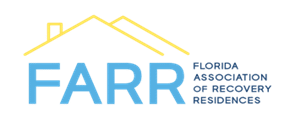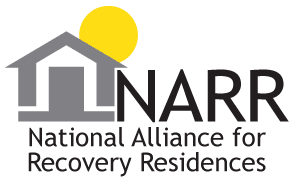Cocaine Addiction Treatment Center in Florida
If you or someone you know is using cocaine, it’s crucial to understand the indications of drug dependency and addiction. Being informed about these signs will empower you to recognize your loved one’s challenges and seek ways to support them in overcoming addiction.
Regular use of cocaine eventually leads to higher tolerance, when individuals must use more of the substance to get the same feeling they originally had. The mental obsession to use develops quickly into a full-fledged addiction, making cocaine and crack some of the most dangerous drugs in existence.
Ambrosia Treatment Center’s cocaine addiction treatment center located in West Palm Beach, Port St. Lucie, Singer Island, Florida offers drug rehab programs, specializing in treating a variety of substance use disorders including our inpatient treatment and outpatient treatment programs.
Florida, often referred to as the Sunshine State for its delightful weather and stunning beaches, also has a notable reputation for having some of the highest rates of drug and alcohol use in the United States. Substance use disorders are prevalent among Florida residents, leading to significant struggles with addiction. The state’s rate of drug abuse and drug-related deaths exceeds the national average, with approximately 3,000 deaths annually attributed to drug use. Shockingly, Florida experiences more drug-related deaths than fatalities caused by gun violence or car accidents.
According to the Centers for Disease Control and Prevention (CDC), Florida’s drug overdose death numbers far surpass the national average, with over 7,000 deaths in 2020 linked to drug use. This places Florida second only to California, which recorded nearly 9,000 deaths. The average age range for drug overdose deaths in Florida is 35, aligning with the national average.
The third most common illicit drug found in drug abuse treatment admissions is cocaine. According to the World Population Review’s report on drug use by the state in 2023, in Florida alone, 11.75% of people used illicit drugs in the past month, 1.84% being cocaine. Understanding addiction statistics in Florida is crucial in comprehending the broader scope of the illegal drug and substance abuse crisis in America.


What is Cocaine?
How is Cocaine Abused?
Snorting
The act of inhaling cocaine through the nose, commonly known as snorting, is widely recognized as one of the most popular methods of cocaine use. Typically sold as a white, crystalline powder, users snort the drug, allowing it to be rapidly absorbed into the bloodstream through the nasal tissues. This results in a powerful but short-lived high. However, prolonged use of cocaine through this method can lead to damage to the nasal septum, causing issues such as nosebleeds, loss of smell, and difficulty swallowing.Injecting
Another method of cocaine use involves injecting the drug directly into the veins. This method provides a more immediate and intense high, but it also carries significant risks. Users who inject cocaine are exposed to the dangers of infection, vein damage, and potential exposure to other drugs. Additionally, sharing needles can lead to the transmission of diseases like HIV and hepatitis C. The faster onset of the drug through injection also increases the risk of overdosing.Speedballing
Speedballing is a dangerous practice where individuals inject a combination of cocaine and heroin. This mixture of a stimulant (cocaine) and a depressant (heroin) creates a unique and potentially lethal high, as each drug enhances the effects of the other. Speedballing significantly raises the risk of overdose and fatal complications.Smoking
Smoking crack cocaine, which is a rock crystal form of the drug, involves heating it on a spoon or in a pipe and then inhaling the resulting smoke. This method leads to a brief but intense high that typically lasts for about 5 to 10 minutes. Smoking crack carries its own set of risks, including lung damage, respiratory problems, and an increased risk of addiction due to the rapid onset and intensity of the high. Regardless of the method of use, the effects of cocaine are generally short-lived, leading individuals to repeatedly seek the initial high. It is important to note that all forms of cocaine use come with significant risks to both physical and mental health.Rubbing Onto Gums (Gumming)
Some users choose to apply cocaine directly onto their gums, a method known as "gumming." While this method results in a slower onset of effects compared to snorting or injecting, it can cause severe damage to the oral tissues over time. Issues such as gum disease, tooth decay, and mouth sores can arise from this method of use.Why is Cocaine Addictive?
It is crucial to identify the signs of cocaine addiction to provide appropriate treatment. Failure to address this addiction promptly can have severe consequences, including the development of mental disorders, cocaine overdose, coma, and even fatality.
Like any drug, the tolerance for cocaine gradually builds after repeated use, altering the user’s mood and lifestyle. After a while, the drug takes over. Whenever they are not on cocaine, they feel the physical and mental repercussions. They feel the need to use to feel normal again. This is the beginning of the cycle of addiction. Due to the short-lived high and availability, cocaine and crack are both extremely addictive.
Why is Cocaine Addiction Dangerous?
In addition to the health implications, cocaine addiction can also lead to financial hardships. Addicts often spend exorbitant amounts of money on the substance, causing considerable stress for themselves and their families. This financial strain can exacerbate existing problems and create further difficulties. Furthermore, the use of cocaine carries additional dangers, such as an increased likelihood of contracting infectious diseases like HIV or AIDS due to needle sharing, as well as the risk of overdose.


What Does Cocaine Do to the Brain and Body?
Signs and Symptoms of Cocaine Addiction
Physical Effects of Cocaine Abuse
There are several common physical indicators of cocaine misuse, including:
- Dilated pupils
- Increased heart rate
- Elevated blood pressure
- Nosebleeds from snorting
- Needle marks (if injected)
- Weight loss
- Restlessness or agitation
- Disrupted sleeping patterns


Psychological Effects of Cocaine Abuse
- Euphoria induced by cocaine use
- Agitation
- Anxiety
- Irritability
- Changes in appetite and sex drive
- Depression
- Paranoia
- Difficulties with concentration
- Hallucinations or delusions
- Intense cravings
- Violent behavior
- Aggression
It’s crucial to be aware of these signs and symptoms of cocaine abuse, as early recognition and intervention can greatly improve the chances of recovery and prevent further harm. If you suspect someone you care about may be struggling with cocaine addiction, it is important to seek professional help and support them in their journey toward a healthier and drug-free life.
Please be vigilant for the following indicators of a substance use disorder (SUD), as a family member or friend may display many or all of these signs:
Numerous individuals snort cocaine in its powdered form. Therefore, one way to identify if someone is using cocaine is by observing white, powdery traces around their nose. Additionally, a “runny nose” is a common occurrence among those who snort cocaine. Extended periods of snorting cocaine can also harm the delicate lining of the nose. As the crystalline powder is snorted, it can cause damage to the nasal passages’ lining, resulting in nosebleeds. This is why individuals who use cocaine often experience nosebleeds.
One of the primary reasons behind cocaine addiction is its potent “euphoric” effects. This intense “high” produces immense pleasure similar to the feeling one experiences after a significant accomplishment. This pleasurable sensation is a driving force for individuals to repeatedly seek the euphoria induced by cocaine. During drug use, euphoria can manifest as extreme excitement or exaggerated happiness. If you observe that your loved one is frequently displaying uncharacteristic excitement, this could be an indication of drug use. This is particularly true if the individual cannot provide a genuine explanation for their heightened state of excitement.
As cocaine amplifies feelings of well-being, it can lead to an increase in self-confidence. Similar to the effects of methamphetamine, cocaine can even instill a dangerous sense of overconfidence. This excessive self-assurance can cause chronic cocaine users to misjudge their abilities and skills. They may believe that their capabilities are far superior to what they are.
These symptoms associated with cocaine use can be life-threatening, especially when individuals misjudge their abilities. For instance, some individuals under the influence of drugs like cocaine may attempt to drive, falsely believing that they are capable of doing so safely. Fatal car accidents rank second to drug overdoses in terms of their severity.
When cocaine is introduced into the brain, it triggers the release of adrenaline and endorphins, resulting in the dilation or widening of the pupils. This dilation can sometimes be so extreme that it causes sensitivity to light. As a result, individuals may opt to wear sunglasses, even when indoors.
A recent study has revealed that individuals who use cocaine tend to avoid social interaction. One of the reasons behind this is that the drug diminishes their perception of reward when engaging with others. Furthermore, drug abuse often leads to feelings of isolation. Various factors contribute to this. In certain cases, family members may misunderstand their loved one’s addiction, mistakenly believing that their substance use is a voluntary choice. Conversely, some family members or friends may genuinely attempt to assist their struggling loved one. However, if they lack the knowledge and understanding of how to effectively help, their efforts may inadvertently push the individual further away. Consequently, isolation becomes a common experience as drug users begin to withdraw from social activities due to feelings of guilt and shame associated with their addiction.
Studies have indicated that the use of “crack” cocaine can induce paranoia in up to 84% of users. Additionally, nearly half of cocaine users exhibit violent behaviors. During episodes of paranoia, individuals may experience irrational fear and believe that others are plotting against them. They may even perceive themselves to be in imminent danger. This state of mind can lead to delusions and hallucinations. Delusions may cause individuals to believe that they are someone else entirely, while hallucinations involve perceiving things that do not exist.
For instance, they may hallucinate the sensation of bugs crawling on their skin, even when there are none. These delusions and hallucinations can drive individuals to engage in violent actions, including suicidal tendencies. While these behaviors may appear aggressive to outsiders, for the users, they may be perceived as a form of self-defense against the imagined threats they believe they are facing.
The effects of crack cocaine are felt almost immediately by those who use it. However, individuals who inhale the drug may not experience its effects for up to 10 minutes. Unfortunately, the euphoric high that comes with crack cocaine only lasts for a short period, typically between 5 to 20 minutes, and can even lead to discomfort afterward. This temporary and fleeting effect often drives individuals to seek more of the drug they are using. Consequently, they may find themselves making excuses to withdraw from family events or simply “disappear” multiple times throughout the day without any explanation.
While cocaine use stimulates the brain to produce endorphins, it also depletes serotonin levels. Serotonin is a hormone that contributes to one’s sense of happiness and well-being. Due to the rapid depletion caused by cocaine, discontinuing its use can result in depression.
If your loved one is displaying a lack of interest in eating, this is not uncommon among individuals struggling with substance misuse. Firstly, cocaine has properties that suppress appetite, leading to a decreased desire for food. Additionally, those who are dependent on drugs often neglect self-care, which can further diminish their appetite. As a consequence of appetite loss, individuals dependent on cocaine often experience noticeable weight loss. This weight change can occur relatively quickly. Therefore, if you have observed someone you know losing weight at a rapid pace, it is important to look for other signs of cocaine abuse. If you notice any additional signs alongside weight loss, your loved one may be grappling with drug addiction.
It’s important to recognize the names used for cocaine commercially and ut on the streets, where hard and illegal drugs are commonly sold for profit. Most people start using drugs such as cocaine in a party setting or to get an extra boost to finish up work. After the first “bump” or “line” of cocaine, many feel the need to continue doing more to sustain their energy.
Commercial name
Cocaine Hydrochloride Topical Solution (an anesthetic rarely used in medical procedures)
Street Names
Blow, Bump, C, Candy, Fishscale, Coke, Crack, Hard, Rock & Base
Common Forms
White powder or Whitish Rock Crystal
Common Ways Taken
Snorted, Smoked, or Injected
Side Effects of Cocaine Abuse
When cocaine is combined with other drugs (poly-drug use), the complications can be far more severe. Cocaine is a potent central nervous system stimulant that produces short-term euphoria, energy, and rapid speech in addition to dangerous physical effects like rapid heartbeat and high blood pressure. Cocaine also inhibits appetite and sleep. It can cause insomnia and despair. Severe paranoia, hallucinations, strokes, and seizures may occur in chronic users. Panic attacks, impatience, restlessness, and anxiety are some of the other immediate adverse effects of cocaine use.
Furthermore, because cocaine is frequently mixed with other chemicals such as baking soda or amphetamines, users may have more severe side effects as a result of these additives. If you think someone you know may be using this powerfully addictive drug, it’s important to act quickly. If left untreated, major complications can occur as a result. Withdrawal symptoms are the body’s response to the elimination of substances from the body. When someone abuses cocaine the following side effects occur:
Cocaine misuse can have long-term consequences for a person’s physical, mental, and emotional health. Withdrawal from cocaine comes in three stages. The initial crash can last a few hours to a few days. During the crash, the individual will feel groggy and tired, as well as depressed and easily irritated. After that, users typically go through acute withdrawal, which is characterized by insomnia, fatigue, and depression. This period lasts about two weeks. Lingering symptoms can continue for several months after stopping cocaine use. Also known as the extinction period, this is the body adjusting to regular flows of dopamine and is usually comprised of sadness, irritability, and uneasiness. Withdrawal symptoms of drug abuse include:
- Depression and anxiety
- Fatigue
- Difficulty concentrating
- Inability to feel pleasure
- Aches
- Pain, chills, and tremors
- Irritability
- Paranoia
- Restlessness
The short-term effects of cocaine abuse include:
- Dilates pupils
- Increases body temperature & blood pressure
- Constricts blood vessels
- Increases heart rate
- Decreases appetite
- Causes loss smell
- Gangrene
- HIV infections
- Stroke
- Heart attack (cardiac arrest)
- Nosebleeds
- Irritability, restlessness & anxiety
- Paranoia/Psychosis
- Overdose
- Death
Long-term cocaine usage can harm the organs of the body, including the heart, lungs, and kidneys. It can also increase the risk of stroke or heart attack by interfering with blood vessel function. It can also increase the risk of mental problems such as anxiety and depression. Drug addiction over a long time can also create brain alterations that might lead to cognitive impairment, such as trouble concentrating and memory problems. It’s also been connected to more violent conduct and suicide ideation. Long-term cocaine users may get addicted to the drug and experience withdrawal symptoms when they stop using. The following are some of the most hazardous long-term effects of cocaine abuse:
- Heart attack (The leading cause of death among people who abuse cocaine. Accounts for 25% of deaths among people ages 18-45).
- Blood clots
- Pulmonary embolism
- A stroke
- Deep vein thrombosis
- Angina, or chest pain caused by vascular constriction
- Myocardial infarction due to a lack of oxygen caused by inadequate blood flow
- Permanently high blood pressure
- Tachycardia
- Arrhythmia (Irregular heartbeat)
- Irritability
- Weariness
- Sleeplessness
- Sadness
It is imperative to undergo addiction treatment, particularly for drug abuse, to disrupt the pattern and achieve a successful recovery. Our assistance is aimed at alleviating the symptoms of cocaine withdrawal, minimizing the chances of a cocaine overdose, and preventing relapse.
Cocaine Addiction Treatment
Treating cocaine withdrawal and addiction necessitates a comprehensive approach that encompasses various aspects. Although there are presently no medications approved by the FDA exclusively for cocaine withdrawal or maintenance therapy, numerous successful treatment strategies have demonstrated their efficacy in aiding individuals in their journey toward overcoming addiction.
Cocaine addiction is a severe and dangerous illness that necessitates the expertise of a professional addiction specialist. Fortunately, there are several treatment options available. The initial step in addressing a substance use disorder is detoxification, which involves managing the physical symptoms of cocaine withdrawal and abstaining from using the drug. Following detoxification, therapy is commonly employed to address any underlying psychological issues and provide support for long-term abstinence.
While some people are just naturally peppy, someone on cocaine or crack is often manic and sometimes paranoid. These symptoms can look like stress or anxiety to the untrained eye but are the best indicators of a cocaine habit that must not be left untreated. Our treatment center in South Florida can help with understanding cocaine addiction, and be able to obtain the right resources to develop healthy coping mechanisms.
Detoxification plays a crucial role in the early stages of conquering cocaine addiction, as it aims to safely eliminate the substance from the body. This process involves effectively addressing withdrawal symptoms and ensuring the individual’s physical well-being during this pivotal phase of rehabilitation. Although our recovery center does not provide detox services, we are dedicated to assisting individuals in locating the most suitable facilities for their specific needs.
Medication-assisted treatment (MAT) is a type of detox that involves the use of specific medications in conjunction with therapy to help reduce cravings and alleviate withdrawal symptoms during the recovery process. This type of treatment can be utilized alongside behavioral therapies or as a standalone treatment option. The most commonly used MAT drugs for cocaine abuse are buprenorphine and naltrexone. Buprenorphine, an opioid medication, aids in reducing cocaine cravings, while naltrexone works by blocking the drug’s effects on the brain’s reward system. Other medications may also be prescribed to address anxiety.
Following detox, many individuals transition into residential or inpatient treatment. This intensive form of care involves living at a treatment facility for a set period, typically ranging from 30 to 90 days or longer, depending on the person’s needs. Inpatient treatment provides a structured environment free from the triggers and stresses of everyday life, allowing individuals to focus fully on their recovery.
During inpatient treatment, patients participate in a variety of therapeutic activities designed to address the root causes of their addiction. These may include individual counseling, group therapy, family therapy, and experiential therapies like art or music therapy. Residential treatment also often incorporates life-skills training, relapse prevention strategies, medication assistance, and other supportive services.
Outpatient treatment serves as a viable option for individuals who are unable to enroll in a residential program due to their work, school, or family commitments. This form of care enables individuals to reside in their own homes while attending treatment sessions at a clinic or facility. The intensity of outpatient treatment can differ, as some programs require multiple weekly sessions lasting several hours each day, while others may only necessitate one or two sessions per week.
A comprehensive treatment approach that combines medical interventions, therapy, and peer support has proven effective in helping numerous individuals overcome cocaine addiction and regain control of their lives. Therapies used include cognitive-behavioral therapy (CBT), dialectical behavior therapy (DBT), motivational interviewing, and contingency management. CBT aims to modify attitudes and behaviors related to drug use, while motivational interviewing aids in identifying the root causes of drug use and facilitating positive changes.
CBT is a type of psychotherapy that assists individuals in recognizing and modifying harmful thought patterns that contribute to drug use. By acquiring new coping mechanisms to manage stress and avoid triggers, individuals can decrease the likelihood of relapse.
Contingency Management (CM) is an evidence-based approach that employs positive reinforcement to encourage drug-free behaviors. Patients may be rewarded with vouchers or other incentives for passing drug tests, which promotes a healthier lifestyle and reinforces their commitment to sobriety. Support Groups are instrumental in maintaining long-term sobriety by providing peer support. Communities like Narcotics Anonymous or Cocaine Anonymous offer a supportive environment where individuals can share their experiences, learn from others, and establish a network of people dedicated to recovery.
Aftercare
Cocaine Addiction Recovery in South Florida
Ambrosia Treatment Center with locations in West Palm Beach, Singer Island, and Port St. Lucie, Florida offers drug rehab treatment to help you or your loved one start their recovery from cocaine addiction. Take a look at our and get started right away.
After completing treatment, 12-step programs can greatly aid those who are recovering from addiction to drugs like cocaine and crack. Active involvement in these programs helps to prevent a relapse, especially in the early period of sobriety.
Learn More About Our Drug Abuse Treatment Programs
In cases where an individual is dealing with multiple substance use disorders, opting for treatment at an inpatient facility may be preferable as it ensures round-the-clock care during the withdrawal process from these substances. Contact Ambrosia Behavioral Healthcare today.

Dr. Alam is an internationally renowned psychiatrist with academic affiliations with Northwestern University and University of Illinois, Chicago where he completed his residency training. He has been a principal investigator for over forty studies and has been involved in research leading to the approval of most psychiatric medications currently on the market. He is the founder of the Neuroscience Research Institute which continues to conduct research on cutting edge medication and interventional psychiatry. Dr. Alam is a Distinguished Fellow of the American Psychiatric Association and the American Society of Addiction Medicine. He has won several awards and has been featured extensively on radio and television.










